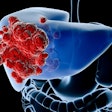Ten-year clinical outcomes for prostate cancer patients participating in a trial comparing postoperative radiotherapy with observation only show that patients who were irradiated had significantly improved biochemical progression-free survival and local control.
After 10 years, 61% of the men who received immediate radiotherapy remained disease-free, compared with 38% who did not, according to findings published online on October 19 in Lancet.
These long-term results come from 1,005 men enrolled in the European Organisation for Research and Treatment of Cancer (EORTC) Charitable Trust randomized trial (EORTC trial 22911). The men had been treated between November 1992 and December 2001 at one of 37 hospitals located throughout Europe. All were 75 years old or younger, and none had previously been diagnosed with prostate cancer. Patients assigned to the radiotherapy treatment arm underwent treatment within four months of surgery.
The radiation therapy arm included 502 patients, whereas 503 patients received the "wait-and-see" approach. At a median follow-up of 10.6 months, 47.3% of the wait-and-see patients had biochemical progression, compared with 20.9% of the patients who underwent irradiation.
Similarly, almost twice as many patients in the wait-and-see group had both biochemical progression and locoregional failure, compared with those who received radiotherapy (4% versus 2.2%, respectively). This was also true for patients who had both biochemical progression and distant failure (0.4% versus 0.2%, respectively).
In all, 338 patients enrolled in the trial experienced clinical progression or death. Again, those who received radiotherapy had less risk of locoregional failure (7%), compared with those who were only observed (16.5%). However, distant failure rates for the two groups were identical, at 7.2%. Death from prostate cancer was nearly comparable, at 5% for the radiotherapy group and 6.8% for the observation-only group.
Late adverse effects were more frequent in the radiotherapy group, at 70.8%, compared with 59.7% for the observation-only group. The risk of severe grade 3 toxicity was more than twice as great (5.3%) in the radiotherapy group than in the observation-only group (2.5%).
Men 70 years of age or older might not benefit from postoperative irradiation in terms of biochemical progression-free survival, concluded lead author Dr. Michael Bolla, from the department of radiation oncology at the Centre Hospitalier Universitaire A Michallon in Grenoble, France, and colleagues.
Regarding clinical progression-free survival, the treatment seems detrimental for this age group. More patients who were 70 or older who received irradiation died (42.6%), compared with patients of the same age in the wait-and-see group (19.6%).
"These long-term results reassure us of the continued benefit and safety of radiation therapy after prostatectomy for a large proportion of men with locally advanced or high-risk prostate cancer," Bolla said in a statement about the study. "They also suggest that younger patients and those with positive surgical margins are most likely to benefit from immediate radiotherapy."


















